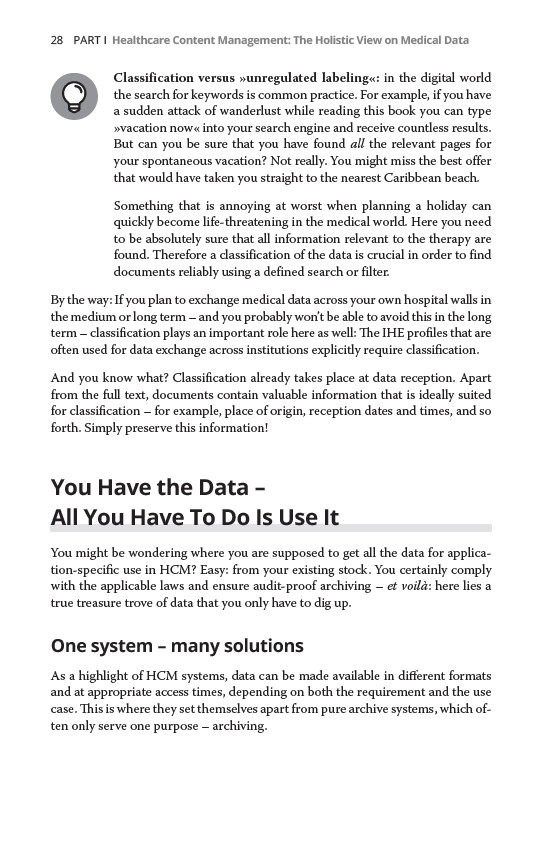
28 PART I Healthcare Content Management: The Holistic View on Medical Data
Classification versus »unregulated labeling«: in the digital world
the search for keywords is common practice. For example, if you have
a sudden attack of wanderlust while reading this book you can type
»vacation now« into your search engine and receive countless results.
But can you be sure that you have found all the relevant pages for
your spontaneous vacation? Not really. You might miss the best offer
that would have taken you straight to the nearest Caribbean beach.
Something that is annoying at worst when planning a holiday can
quickly become life-threatening in the medical world. Here you need
to be absolutely sure that all information relevant to the therapy are
found. Therefore a classification of the data is crucial in order to find
documents reliably using a defined search or filter.
By the way: If you plan to exchange medical data across your own hospital walls in
the medium or long term – and you probably won’t be able to avoid this in the long
term – classification plays an important role here as well: The IHE profiles that are
often used for data exchange across institutions explicitly require classification.
And you know what? Classification already takes place at data reception. Apart
from the full text, documents contain valuable information that is ideally suited
for classification – for example, place of origin, reception dates and times, and so
forth. Simply preserve this information!
You Have the Data –
All You Have To Do Is Use It
You might be wondering where you are supposed to get all the data for application
specific use in HCM? Easy: from your existing stock. You certainly comply
with the applicable laws and ensure audit-proof archiving – et voilà: here lies a
true treasure trove of data that you only have to dig up.
One system – many solutions
As a highlight of HCM systems, data can be made available in different formats
and at appropriate access times, depending on both the requirement and the use
case. This is where they set themselves apart from pure archive systems, which often
only serve one purpose – archiving.